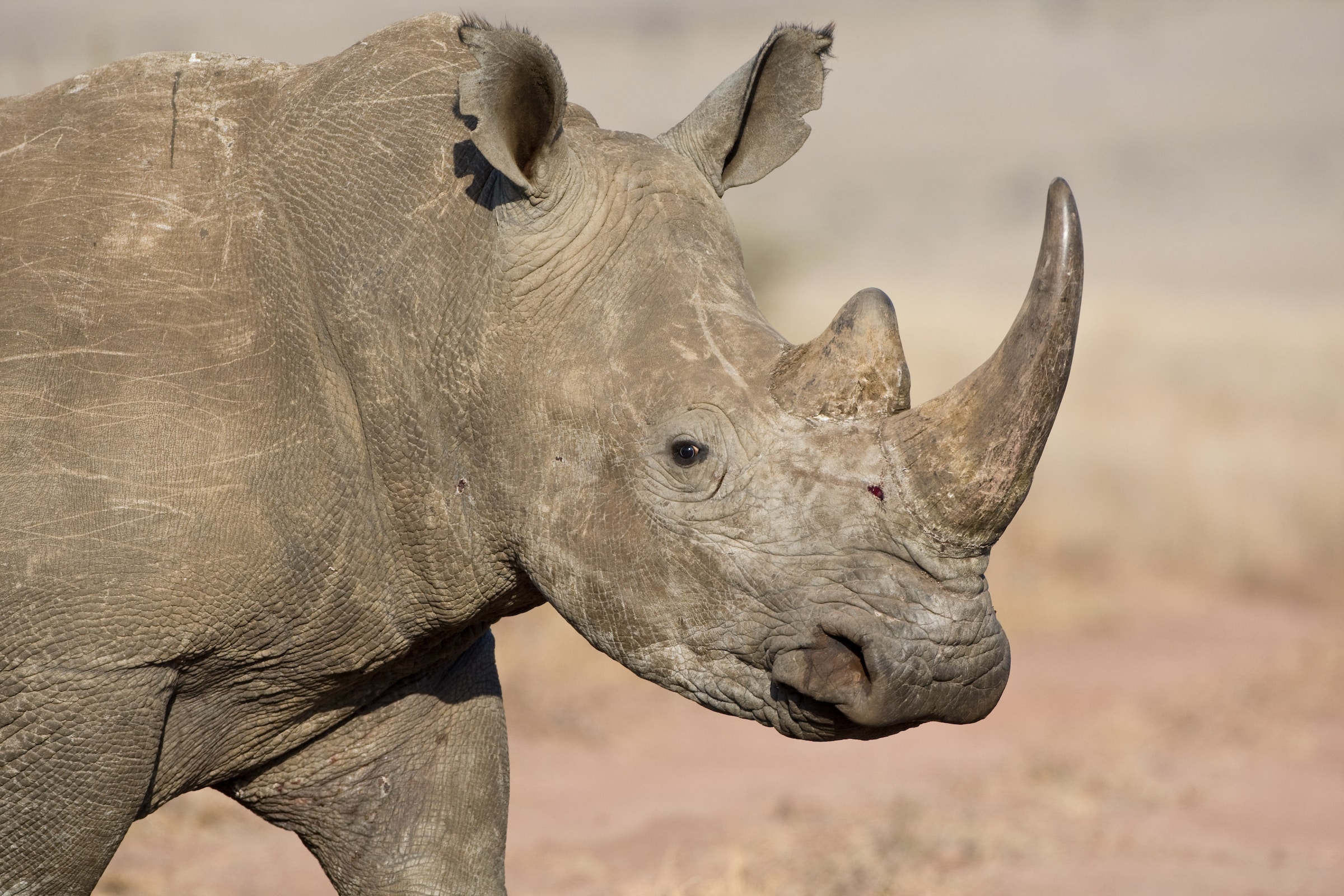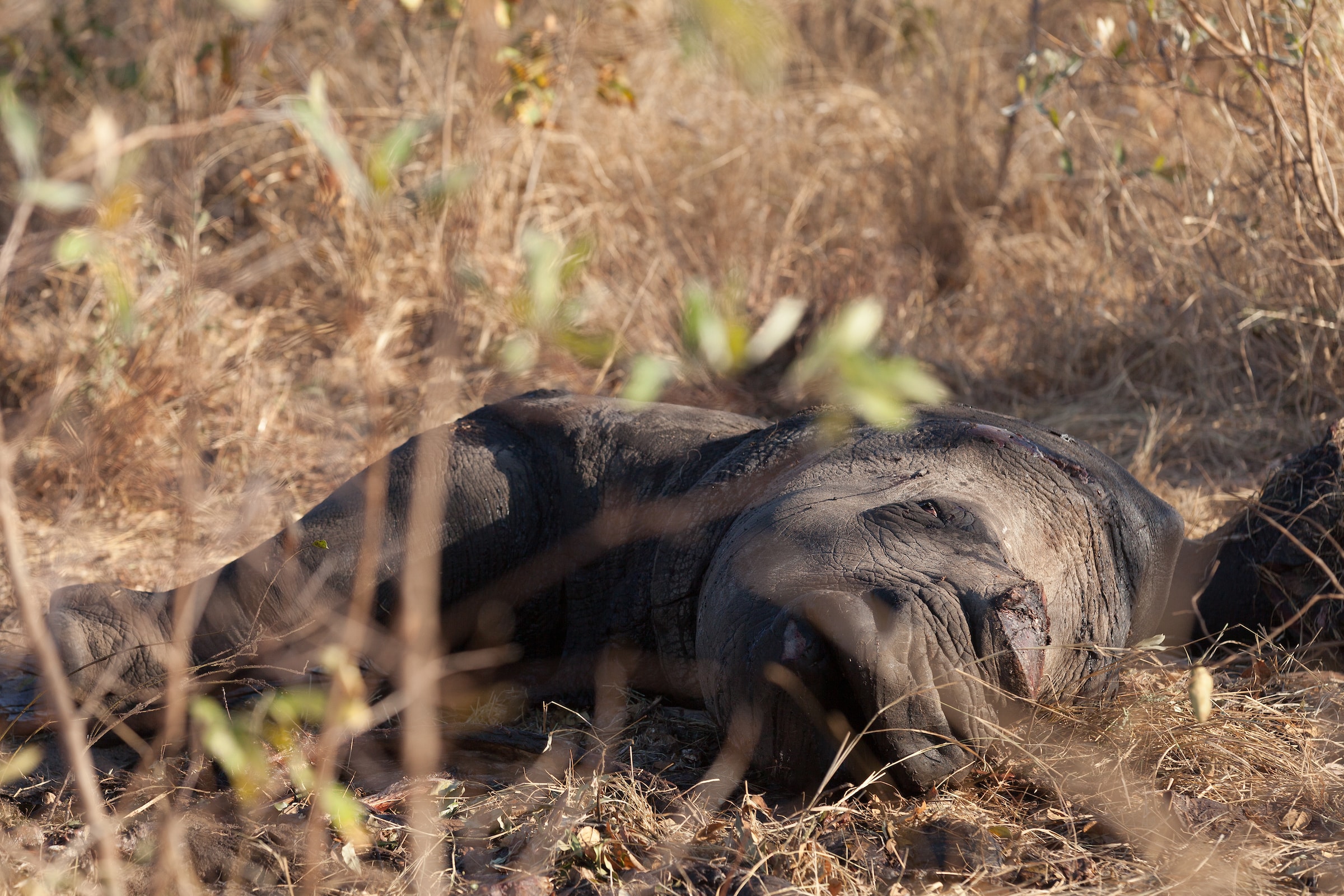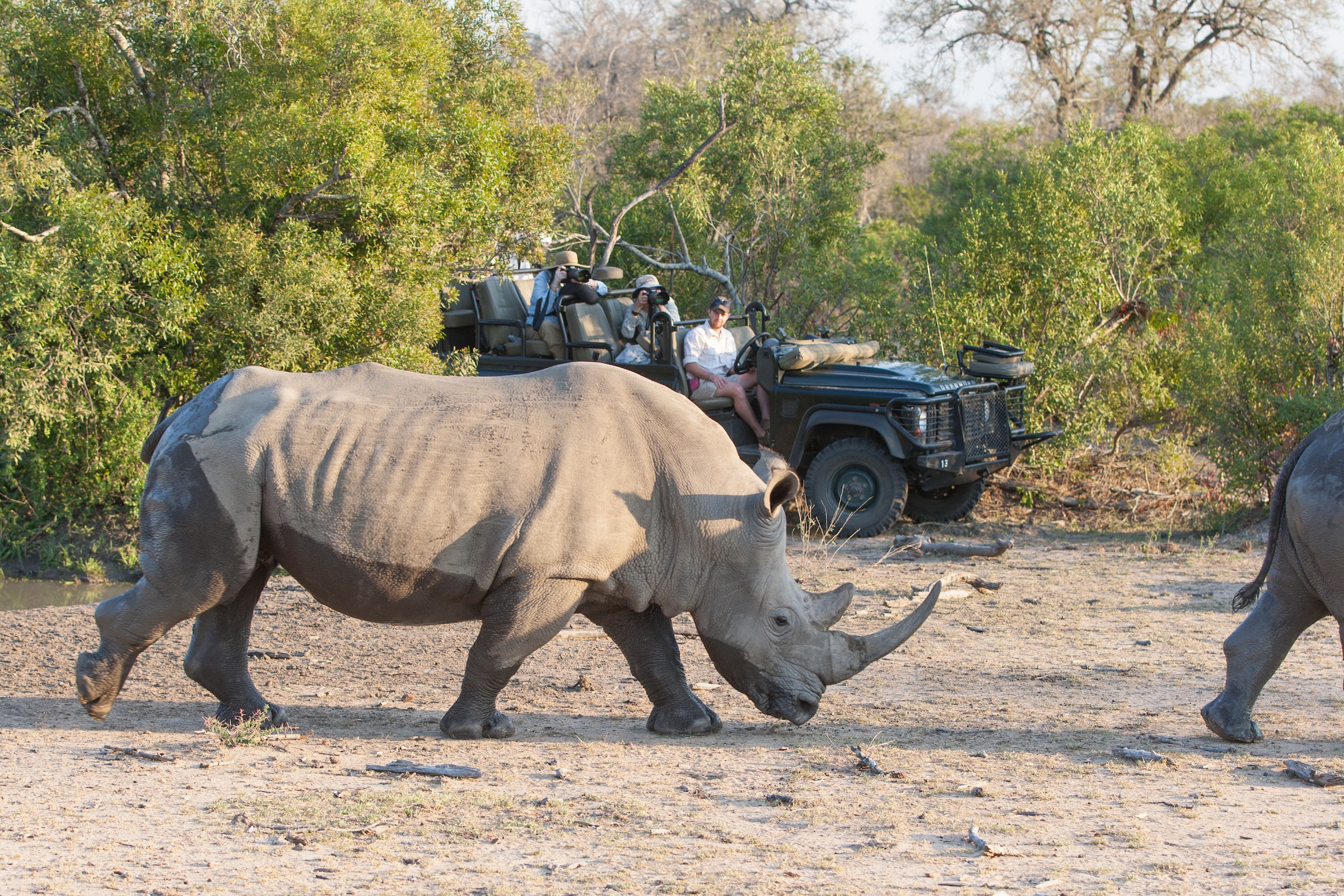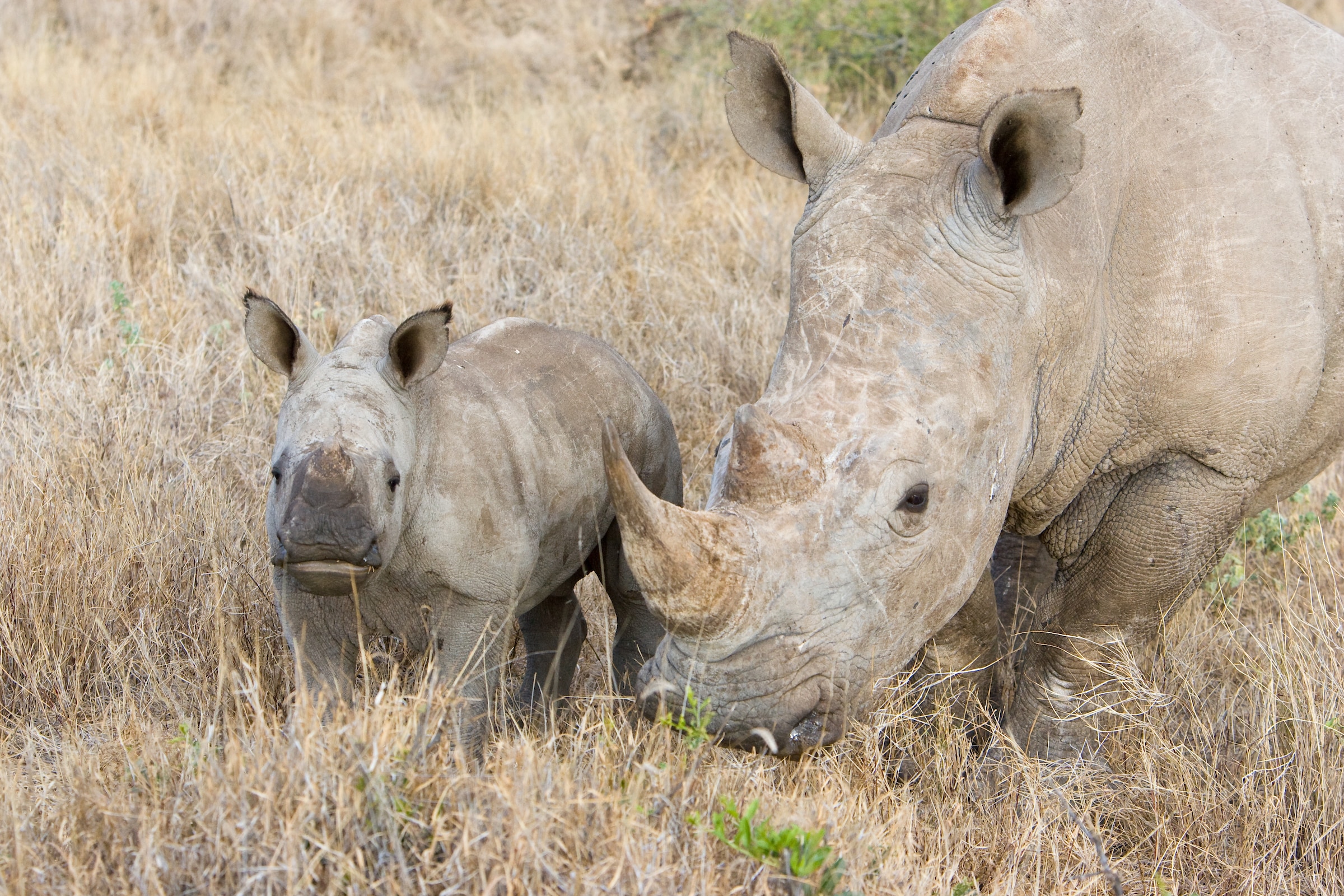Rhinos are some of the most poached wildlife on the planet due to the illegal horn trade. Their horns have been used in traditional Chinese medicine for many generations, even though these horns are simply made of keratin—the same as your own fingernails and hair—and hold no proven medicinal value. The illegal horn trade continues to threaten rhinos across Africa and Asia.
Last year, 87 rhinos were poached in Namibia, a significant increase from the 45 poached in 2021. Of those 87 rhinos, 61 were black rhinos, of which there are only about 6,000 left in the wild. Over the years, poaching of rhinos in South Africa and Botswana has been so persistent that it has led to the extreme, temporary solution of dehorning rhinos in order to save them from being targeted by poachers. The illegal horn trade, combined with habitat loss, has led to lower rhino population densities in some areas. While South Africa’s Kruger National Park saw a decline in rhino poaching in 2022 thanks to anti-poaching work from authorities, poachers simply shifted to other vulnerable landscapes, such as KwaZulu-Natal, which lost 244 rhinos—the vast majority of which lived in provincial parks and privately-owned reserves—to poachers last year. In South Africa specifically, home to the largest rhino population in the world, one rhino is killed by poachers every day.
Despite prevalent poaching due to high demand for rhino horns in Asia, rhino conservation has experienced success. In the 1920s, there were only about 100 southern white rhinos left; their population has grown to 20,000 individuals as of 2012. This success is partially due to the emergence of the private sector’s involvement with rhino conservation, which began in the 1960s when white rhinos were moved from Hluhluwe-iMfolozi Park to state reserves and private land. Today, private landholders conserve over half of South Africa’s white rhinos, more than 75% of Zimbabwe’s and Namibia’s, and 72% of Kenya’s.
This came about because incentives emerged for private landowners to grow their rhino populations in response to the demand for trophy hunting and ecotourism. The other key component was a great deal of financial contributions from smaller private properties toward security, and these properties are easier to secure than vast national parks. In terms of security expenses, it was estimated in 2017 that private ranchers spent about $2,200 (USD) per rhino versus about $520 (USD) by South African National Parks.
Though highly effective, the high financial investment required from the private sector to secure their rhino populations is not sustainable. The cost of owning rhinos is only growing, and it’s beginning to vastly outweigh the benefits for these landowners. In 2018, it was estimated that 28% of South Africa’s private rhino owners were disinvesting and only 15% were increasing their investment in rhino conservation. Just recently, one private owner made headlines when he attempted to sell his 2,000-strong herd of white rhinos because he could no longer afford to maintain their upkeep. His auction failed to attract any bidders. To curb this trend, additional revenue streams beyond ecotourism and trophy hunting are needed to provide private rhino custodians with incentives. Other sources of funds could include carbon and biodiversity credits, impact investments, and tax incentives.
It is clear that in order for private rhino conservation to be successful, privately owning rhinos needs to be more sustainable. To begin working toward this sustainability, the Rhino Recovery Fund is supporting efforts to incentivize protecting rhinos on private land, such as our recent grant to Wilderness Foundation, who have a sustainable finance unit that are helping with tax incentives for landowners who support rhino conservation and biodiversity management.






